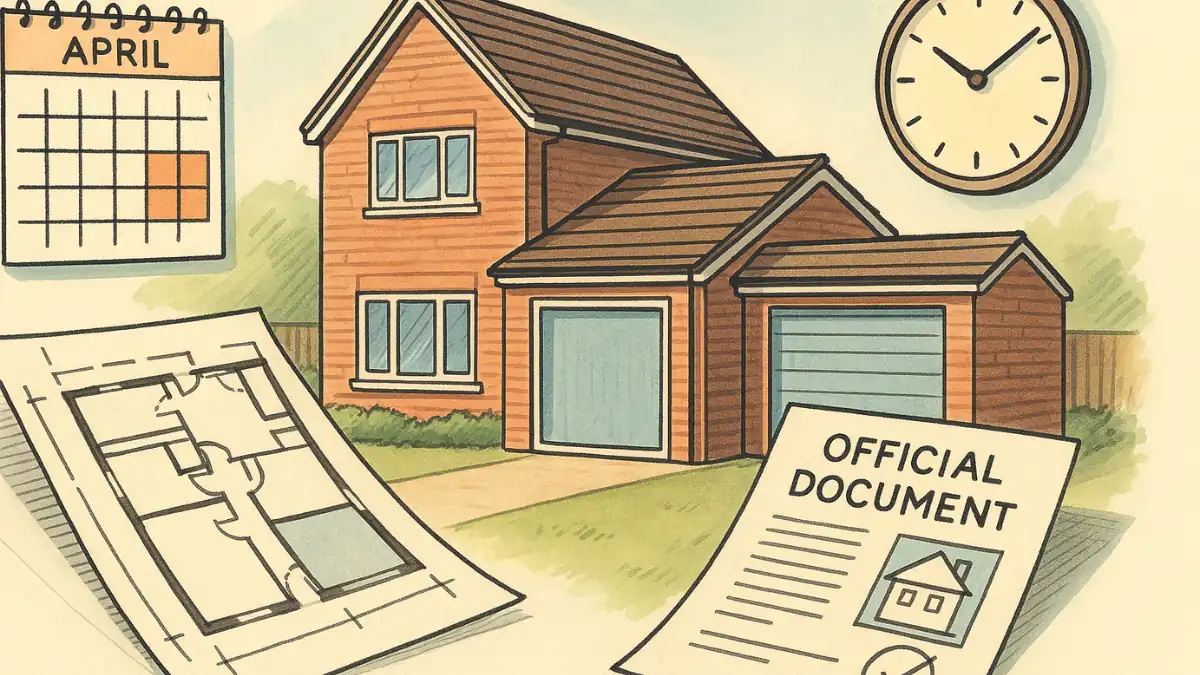Share this post:
Planning Permission 4 Year Rule is one of the most misunderstood areas of UK planning law. Many homeowners believe that if they’ve made alterations without permission and four years have passed, the council can no longer take action. While this is sometimes true, the details matter. This guide explains exactly what the 4-year rule means, how it applies, and what to watch out for if you’re relying on it.
Need help confirming if your project is now lawful?
Our planning team can review your situation and advise whether you qualify under the 4-year rule or need a lawful development certificate.
What the 4-Year Planning Rule Actually Means
The planning permission 4-year rule applies when unauthorised building work or a change of use has taken place without formal approval. Under Section 171B of the Town and Country Planning Act 1990, if a building operation (like constructing an extension, garage, or outbuilding) has been substantially completed for at least four years, the local council usually can’t take enforcement action. After that point, the development may be considered “lawful” through passage of time.
Tip: The 4-year rule only covers physical building work – not uses or occupancy. For example, a converted flat or commercial use usually falls under the 10-year rule instead.
However, the rule doesn’t make the work automatically legal. To confirm the status officially, homeowners should apply for a Lawful Development Certificate (LDC) under Section 191. This provides formal council confirmation that the development is now immune from enforcement.
The 4-Year vs 10-Year Rule – What’s the Difference?
Understanding the distinction between the 4-year rule and the 10-year rule is vital. The shorter time limit applies to operational development — that means the construction of something new or significant alterations to an existing structure. The 10-year rule, on the other hand, applies to changes in use or breaches of planning conditions.
- 4-Year Rule: Covers new buildings, extensions, garages, and structural works.
- 10-Year Rule: Covers unauthorised use (for example, converting a house to flats) or breach of a planning condition.
Even small misunderstandings between these two categories can lead to enforcement. If you’re unsure which one applies, it’s worth seeking advice before submitting a certificate application.
Note: The Planning Portal and GOV.UK provide clear summaries of time limits and enforcement guidance for England and Wales.
Retrospective Planning & Lawful Development Certificates
If you’ve completed work without permission, you may be able to regularise it through a retrospective planning application or a lawful development certificate. The right route depends on the nature of the work and when it was finished.
For building operations completed more than four years ago, applying for a Lawful Development Certificate is usually the best option. The council will ask for proof that the structure has existed unchanged and in continuous use for that entire period.
Important: Don’t assume the clock starts when work begins. The four years run from the date of substantial completion — usually when the structure was finished and first occupied or used.
Evidence You’ll Need to Prove the 4-Year Rule
Councils require solid, dateable evidence. Typical examples include:
- Time-stamped photographs showing the completed structure.
- Utility bills or council tax records showing occupation.
- Receipts or invoices from builders or suppliers.
- Sworn statements (statutory declarations) from neighbours or previous owners.
Each local authority will assess evidence differently, but consistency and credibility are key. Plans Made Easy can help you prepare an LDC submission that presents this clearly and meets your council’s requirements.
Not sure if your idea fits under the 4-year rule?
We’ll check your project against planning legislation and help you apply for a lawful development certificate if you qualify.
Local Differences – Scotland and Wales
While the 4-year rule operates across much of the UK, each nation’s planning system has its own quirks and enforcement timelines.
Scotland and Wales – how the 4-year rule differs
In Scotland and Wales, planning enforcement time limits work slightly differently from those in England. In Scotland, most unauthorised building works become immune from enforcement after four years, but changes of use usually take ten years — broadly similar to England. However, local authorities in Scotland often take a firmer line on what counts as “operational development,” so evidence of continuous use or completion dates must be clear. In Wales, the old 4-year rule was replaced in 2023 by a ten-year limit for all breaches, following an update to planning legislation under the Planning (Wales) Act. That means homeowners in Wales no longer benefit from the shorter time period and should seek advice before assuming past work is lawful. Always check directly with your local planning authority, as timelines and interpretations can vary between councils.
Typical Costs and Timescales
The cost of applying for a Lawful Development Certificate varies by council, but most charge around £129 for a householder application in England. Plans Made Easy can prepare drawings and supporting statements to accompany your application, ensuring everything meets planning law requirements.
Quick snapshot: LDC decisions normally take 8 weeks, though councils can extend this if further evidence is requested.
Common Mistakes to Avoid
- Relying on verbal advice instead of written council confirmation.
- Applying under the 4-year rule for a change of use (should be 10 years).
- Assuming enforcement can’t happen after four years when work is incomplete.
- Failing to gather consistent evidence — gaps in dates can invalidate your claim.
Frequently Asked Questions
Does the 4-year rule apply to extensions?
Yes, if the extension was built without planning permission and has been completed and in place for at least four years, it may be lawful under the 4-year rule.
Can I sell my house if I relied on the 4-year rule?
Yes — but most buyers and solicitors will ask for a Lawful Development Certificate as proof that the council cannot enforce against the work.
Is the rule the same for listed buildings?
No. Listed buildings have separate consent requirements. Unauthorised works can be enforced against at any time, regardless of age.
Next Steps & Useful Guides
- Planning Permission (UK): Complete Guide
- Retrospective Building Regulations Time Limit
- Planning Permission Refusal – What It Means
- Structural Calculations – When Do You Need Them?
- Conservation Areas – What You Can and Can’t Do
- Rule covers:Unauthorised building works (operational development).
- Time limit:4 years from substantial completion (England & Scotland).
- Wales update:Now 10 years for all breaches under new Welsh planning legislation.
- Proof needed:Photos, bills, declarations, and dated evidence of continuous existence.
- Application type:Lawful Development Certificate (Existing Use or Development).
Ready to confirm your project’s lawful status?
Plans Made Easy can prepare your certificate application, gather supporting evidence, and liaise with your local council.
Further reading: Planning Portal • GOV.UK

Performance Verified ✅
This page meets PME Optimisation Standards — achieving 95+ Desktop and 85+ Mobile PageSpeed benchmarks. Verified on


